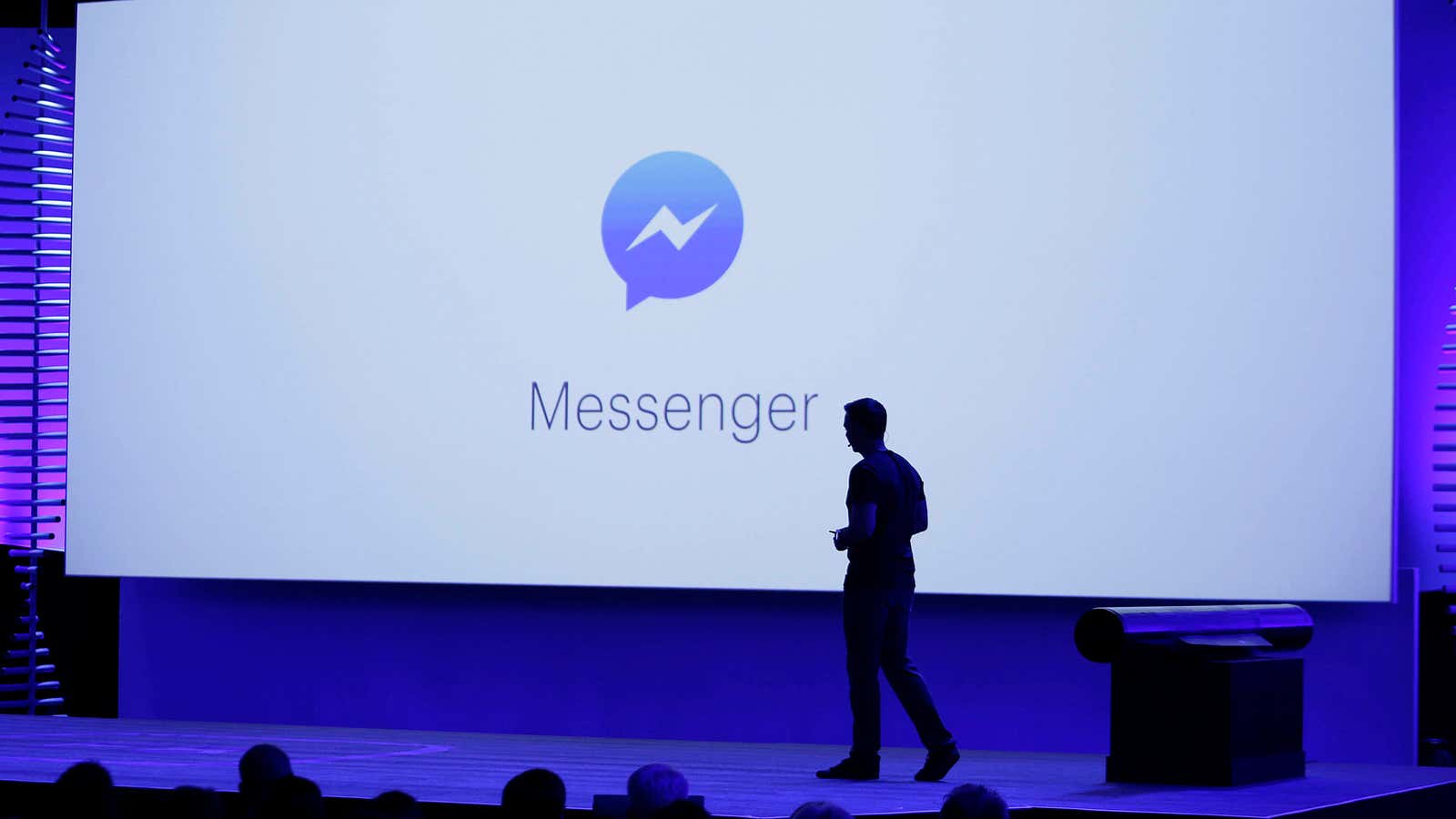Facebook just announced that 1 billion people are using Messenger each month.
It’s an impressive milestone to be sure, but reaching it is all the more noteworthy because of the initial backlash to Facebook splitting Messenger off from its flagship app in 2014.
When the social network removed chatting capabilities from the Facebook app, users were quick to express their outrage. For Facebook, it was the simplest way to force users to download the standalone Messenger app. For users, it was yet another app cluttering their phone screens.
Though it wasn’t apparent at the time, CEO Mark Zuckerberg had bigger plans for Messenger. Zuckerberg, who hired PayPal’s David Marcus to oversee it, was planting the seeds for a far more robust platform, something that would be difficult to achieve if it remained nested within the big blue app. Zuckerberg envisioned far more than chatting on Messenger. By opening it up to third-party integrations, users could send money to their friends, shop by chatting with bots, express themselves with GIFs and stickers, and much more. This strategy only became apparent the following year at Facebook’s F8 developer conference. Since then, other companies have followed Zuckerberg’s lead. This year, chat bots and messaging platforms dominated Silicon Valley’s most high-profile developer conferences.
Facebook continued hooking users by keeping Messenger’s momentum going. It brought Messenger to the browser, so people can chat on their computers as well as their mobile devices. It also opened up the chat app to all users, not just those with Facebook accounts. Along the way, Messenger proved to be even more popular than the Facebook app in terms of downloads. Looking back on Messenger’s last two years, it’s now obvious that Facebook’s vision for Messenger was not only brilliant, but it also spurred the tech industry to pay attention to and rethink chat apps.
